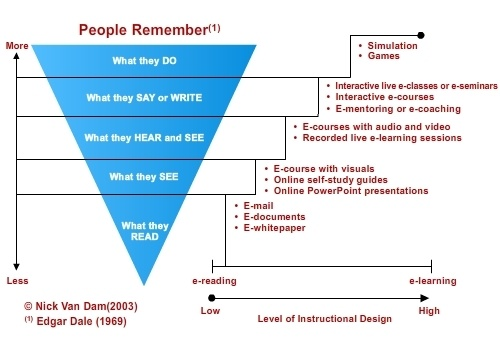e-Learning Ecologies MOOC’s Updates
Gamification
Gamification is the use of game elements and game design techniques in non-game contexts.[1]
Gamification is about learning from games by understanding what makes the games successful, engaging and then taking some of those techniques, and thoughtfully applying them to other situations which are not themselves games. In other words, it is the use of game mechanics to encourage learners to explore and learn as they move toward an end goal.
Motivation
One of the biggest challenges that gamification can cope with is that of motivation. Many times, learners, especially in atypical education lack motivation to complete a course if they feel that there is no recognition of their work. Gamifying any learning process can help them better find a motivation by assigning them a bigger task, giving recognition badges, etc. in my view a successful gamified learning experience is one that:
- Captures the learner’s interest.
Whether by using an interesting storyline with relevant plots or a discovery/easter egg quest, it is important to capture your audience’s attention and convince them to follow this story to the very end.
- Increases Engagement & Retention
The biggest advantage of gamification is that it puts the learner in the “driver’s” seat. By constantly having them think and make decisions, and using techniques that require a learner to interact with the course content, increases their engagement
- Promote Healthy Competition
Gamification can be a terrific way to spur some competition, either amongst employees or even just against themselves. Some companies use leaderboards, rankings, or badge systems for employees to show how well they are doing in their online training.
Overall, elements of gamification can be inserted in all types of e-learning environments. The Benefits of Gamification in eLearning are[2]:
- Better learning experience.
The learner can experience “fun” during the game and still learn if the level of engagement is high. A good gamification strategy with high levels of engagement will lead to an increase in recall and retention.
- Better learning environment.
Gamification in eLearning provides an effective, informal learning environment, and helps learners practice real-life situations and challenges in a safe environment. This leads to a more engaged learning experience that facilitates better knowledge retention.
- Instant feedback.
It provides instant feedback so that learners know what they know or what they should know. This too facilitates better learner engagement and thereby better recall and retention.
- Prompting behavioral change.
Points, badges, and leaderboards would surely make training awesome. However, gamification is about a lot more than just those surface level benefits. Gamification can drive strong behavioral change especially when combined with the scientific principles of repeated retrieval and spaced repetition.
- Can be applied for most learning needs.
Gamification can be used to fulfill most learning needs including induction and onboarding, product sales, customer support, soft skills, awareness creation, and compliance.
- Impact on bottom-line.
On account of all these aspects that touch and impact learners (better learning experience, higher recall and retention, catalyzing behavioral change, and so on), it can create a significant performance gain for the organization.
References:
https://community.articulate.com/articles/gamification-techniques-how-to-apply-them-to-e-learning
https://www.researchgate.net/publication/230854710_From_Game_Design_Elements_to_Gamefulness_Defining_Gamification
[1] http://gamification-research.org/wp-content/uploads/2011/04/02-Deterding-Khaled-Nacke-Dixon.pdf
[2] https://elearningindustry.com/top-6-benefits-of-gamification-in-elearning




Thank you for the resources and overview of benefits of gamification. As a parent, I have seen my child's motivation increase when he feels like he is playing a game. He was recently engaging with a math learning website and they used gamification methods and my son played on the site all day. I would love to see more of this designed for use in other subject areas. As you pointed out, it can be applied for most learning needs. I teach high school chemistry and I would love to see a virtual learning platform where students improve skills within a gamified environment. Unfortunately this is not available to me, as far as I know, and I would love to see such things made available in a public school setting. I think that is the transformation we need to see to meet the needs of our students but I fear that we will not be able to provide what they need in time and they will disengage fully from school learning.
Dear Eleni Tsaireli
I gained my first insights on Gamification. I do realize that applying these elements can make learning and teaching ( I teach Science to elementary)both motivational, and fun. There is a sense of student autonomy and recursive feed back which kind of makes learning more complete. Gamification helps checkpoint type of diagnostic test and as it allows students sail with their accord and can be effective to implement in learning modules
However there is dependency on a strong technology platform to create this design in lesson modules. The will be a need for well-thought content breakup, content lay-out and readiness of content both depth-wise an width wise.
Good e-learning for the teacher too.
Thanks for sharing
Lakshmi Satish
New Joinee in the course